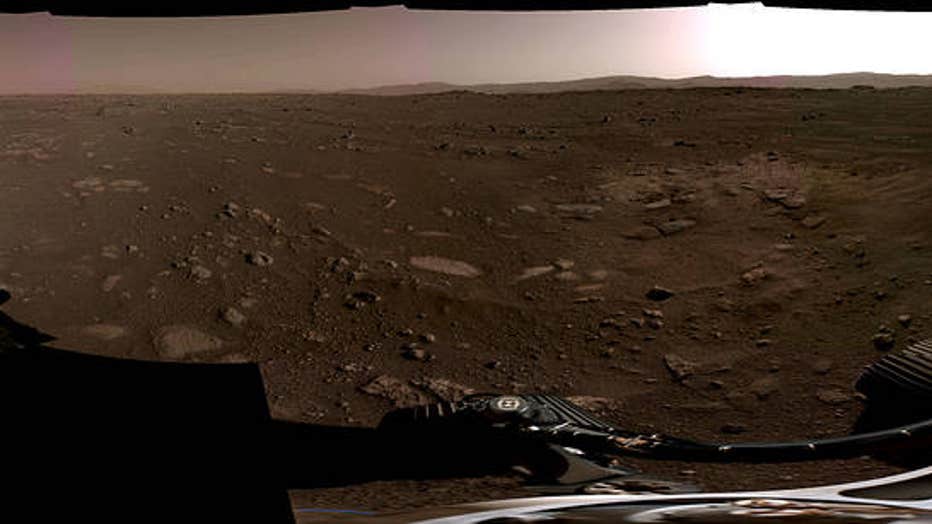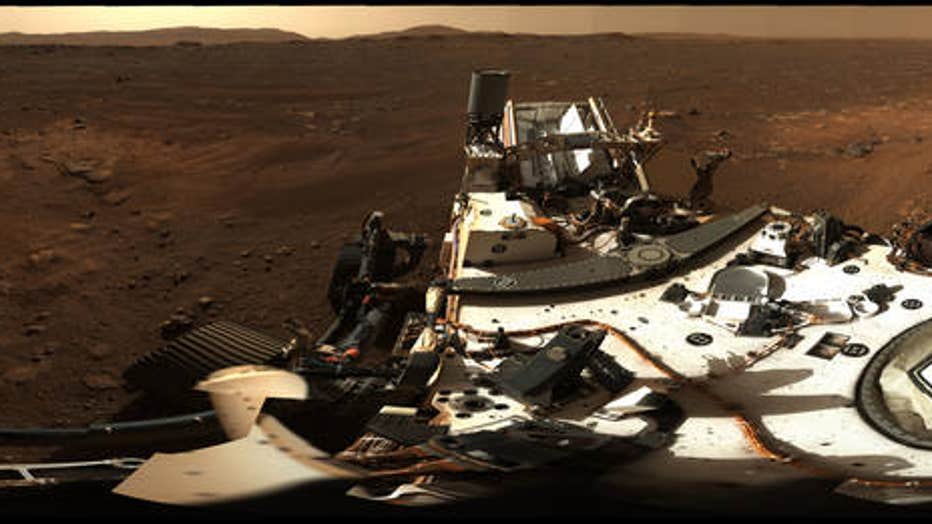NASA's Perseverance rover sends back first HD Mars panorama
NASA's Mars 2020 Perseverance rover has sent back its first high-definition panorama, giving a 360-degree look from the planet's surface using its rotating Mastcam-Z instrument.
The picture is the rover's second panorama since Perseverance landed on the planet on Feb. 18. The rover's Navigation Cameras -- also on the mast -- captured another panorama on Feb. 20.
The newly-released picture, captured on Feb. 21, was made using a combination of 142 images. Perseverance has already beamed back thousands to Southern California's Jet Propulsion Laboratory (JPL).
In it, the Jezero Crater rim and what NASA describes as the "cliff face of an ancient river delta" can be seen in the distance.
Researchers believe the 28-mile-wide crater was once flooded with water and home to an ancient river delta more than 3.5 billion years ago.
RELATED: Touchdown confirmed! NASA's Perseverance rover lands on Mars
A large part of Perseverance's mission is to search for and attempt to document proof of ancient microbial life. It will also collect and cache Martian rock and sediment samples for later return to Earth.

Panorama, taken on Feb. 20, 2021, by the Navigation Cameras, or Navcams, aboard NASA’s Perseverance Mars rover. (NASA)

IDL TIFF file (NASA)
The Mastcam-Z and the Supercam will be used to provide both imaging and analysis of the surface's mineralogy and chemical composition. It will assist in the identification of rocks and sediment worthy of examination by the mission team.
The Mastcam-Z is a dual-camera system equipped with high-definition video, zoom function, and the ability to take panoramic color and 3D images.
According to NASA's release, the camera can reveal details as small as 0.1 to 0.2 inches across close to Perseverance and 6.5 feet to 10 feet across in the distance.
Researchers believe the 28-mile-wide crater was once flooded with water and home to an ancient river delta more than 3.5 billion years ago.
A large part of Perseverance's mission is to search for and attempt to document proof of ancient microbial life. It will also collect and cache Martian rock and sediment samples for later return to Earth.
RELATED: Perseverance: Secret message planted on giant parachute that carried Mars rover
The Mastcam-Z and the Supercam will be used to provide both imaging and analysis of the surface's mineralogy and chemical composition. It will assist in the identification of rocks and sediment worthy of examination by the mission team.
The Mastcam-Z is a dual-camera system equipped with high-definition video, zoom function, and the ability to take panoramic color and 3D images.
According to NASA's release, the camera can reveal details as small as 0.1 to 0.2 inches across close to Perseverance and 6.5 feet to 10 feet across in the distance.

